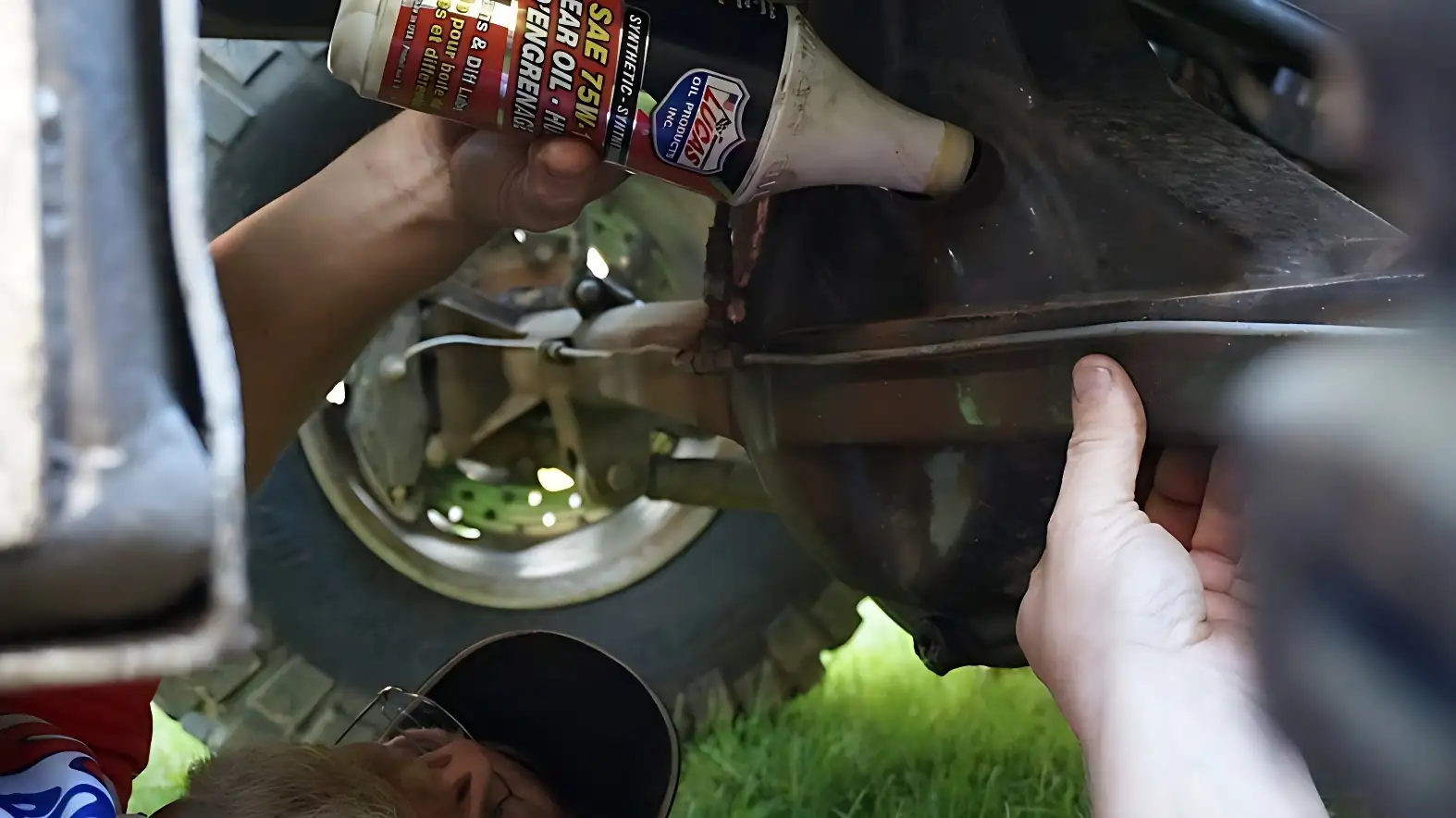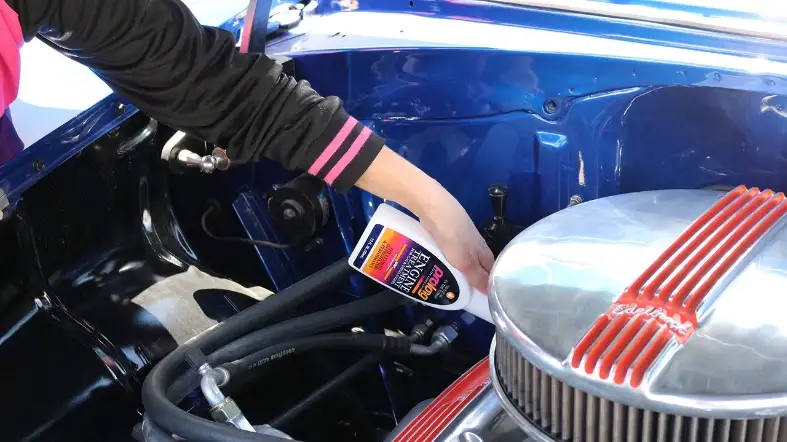Lucas Oil Stabilizer is a popular product used to enhance the performance and protection of engines.
There is some debate about whether it is safe to use in automatic transmissions.
Automatic transmission fluid plays a crucial role in ensuring proper transmission function, and some argue that adding an oil stabilizer can cause damage to the transmission.
In this context, this topic is worth exploring in depth to determine whether or not it is safe and effective to use Lucas oil stabilizer in an automatic transmission.
Can Lucas Oil Stabilizer Be put in Automatic Transmissions?
While there is some debate on the topic, the general recommendation is to avoid using Lucas oil stabilizers in automatic transmissions.

While it may provide some benefits such as improved lubrication and reduced heat and friction, it also carries the risk of clogging fluid channels and causing damage to the transmission.
Follow the manufacturer’s recommendation and consider alternative solutions or consult with a professional mechanic.
Advantages of Using Lucas Oil Stabilizer in Automatic Transmission
Here are some potential advantages of using Lucas Oil Stabilizer in an automatic transmission:
Enhanced Lubrication and Protection:
Lucas Oil Stabilizer is designed to improve the lubricating properties of automatic transmission fluid.
By providing additional protection against wear and tear, it can extend the life of the transmission.
The stabilizer contains special additives that help to protect against rust, corrosion, and oxidation, which can lead to fluid breakdown and transmission failure.
Reduced Heat and Friction:
The friction between the internal components of an automatic transmission can generate a lot of heat, which can cause damage over time.
Lucas Oil Stabilizer contains additives that can help to reduce friction and heat in the transmission.
This can help to prevent overheating, which can cause the transmission fluid to break down and damage the transmission.
Improved Shifting:
The use of Lucas Oil Stabilizer can help to improve the shifting of gears in an automatic transmission.
The stabilizer contains special additives that help to clean and condition the internal components of the transmission, ensuring that they work smoothly and efficiently.
This can result in smoother shifting and better overall performance.
Better Performance Under
Extreme Conditions: Lucas Oil Stabilizer is designed to provide additional protection and lubrication under extreme conditions, such as high temperatures or heavy loads.
It contains special additives that can help to prevent damage caused by excessive heat or stress on the transmission.
This can help to prolong the life of the transmission and prevent costly repairs.
How to Use Lucas Oil Stabilizer in an Automatic Transmission?

Below are the steps on how to use Lucas Oil Stabilizer in an automatic transmission:
Determine the recommended amount:
Before adding any additive to your transmission, it’s important to determine the recommended amount.
Check your vehicle owner’s manual or consult with a professional mechanic to find out how much transmission fluid your vehicle requires and how much Lucas Oil Stabilizer should be added.
Add Lucas Oil Stabilizer to transmission fluid:
Once you have determined the recommended amount of Lucas Oil Stabilizer, add it directly to the transmission fluid.
This can be done by pouring the stabilizer into the transmission dipstick tube. Use a funnel to prevent spillage.
Warm up the engine:
After adding the Lucas Oil Stabilizer, start the engine and let it run for a few minutes to warm up the transmission fluid.
This will help to distribute the stabilizer evenly throughout the transmission.
Check fluid levels:
After adding the stabilizer and warming up the engine, check the transmission fluid levels to ensure that they are at the proper level.
Use the dipstick to check the fluid level and add more fluid if necessary.
Monitor performance:
After using Lucas Oil Stabilizer in your automatic transmission, monitor the performance of your vehicle.
Keep an eye on the shifting, performance, and overall smoothness of your transmission.
If you notice any issues or changes in performance, it’s important to consult with a professional mechanic to determine if there is an underlying issue.
Alternatives to Lucas Oil Stabilizer
There are several alternatives to Lucas Oil Stabilizer that can provide similar benefits for your automatic transmission. Here are a few options to consider:
Sea Foam Trans Tune:
Sea Foam Trans Tune is an additive designed to clean and protect automatic transmissions.
It helps to remove deposits and varnish buildup, improves shifting, and reduces noise and vibration.
Prolong Super Lubricants Transmission

Treatment: This additive is designed to reduce friction and heat in automatic transmissions, improve shifting, and extend the life of the transmission.
It also helps to protect against wear and tear and prevents fluid breakdown.
Lubegard Automatic Transmission Fluid Protectant:
Lubegard Automatic Transmission Fluid Protectant is an additive that helps to improve the performance and lifespan of automatic transmissions.
It helps to prevent overheating, reduces friction and wear, and improves shifting.
Rislone Transmission Stop Slip with Leak Repair:
This additive is designed to reduce slip, rough shifting, and noise in automatic transmissions. It also helps to seal leaks and prevent fluid loss.
STP Automatic Transmission Treatment:
STP Automatic Transmission Treatment is an additive designed to clean and protect automatic transmissions.
It helps to reduce varnish and deposits, prevent overheating, and improve shifting.
XADO Revitalizant EX120 for Automatic Transmissions:
This additive contains a unique technology called Revitalizant, which helps to restore worn metal surfaces in the transmission.
It also helps to improve shifting and reduce noise and vibration.
Trans-X Automatic Transmission Stop Leak & Tune-Up:
This additive helps to reduce fluid loss and improve shifting in automatic transmissions. It also helps to prevent leaks and seal gaskets and seals.
How much Lucas Oil Stabilizer should I use in my automatic transmission?
Determining the proper amount of Lucas Oil Stabilizer to use in your automatic transmission can vary depending on the specific make and model of your vehicle.
It’s important to consult your vehicle owner’s manual or seek advice from a professional mechanic to determine the recommended amount.
However, here is a general guideline for determining the appropriate amount of Lucas Oil Stabilizer based on the transmission fluid capacity:
| Transmission Fluid Capacity | Amount of Lucas Oil Stabilizer |
|---|---|
| 1-2 quarts | 1/2 quart |
| 3-5 quarts | 1 quart |
| 6-10 quarts | 2 quarts |
| 10-12 quarts | 3 quarts |
FAQs
How Do I Add Lucas Oil Stabilizer To My Automatic Transmission?
You can add Lucas Oil Stabilizer directly to the transmission fluid by pouring it into the transmission dipstick tube. Use a funnel to prevent spillage.
Do I Need To Warm Up The Engine After Adding Lucas Oil Stabilizer To My Automatic Transmission?
Yes, it is recommended to warm up the engine for a few minutes after adding the stabilizer to allow it to distribute evenly throughout the transmission.
Can I Use Lucas Oil Stabilizer In A Transmission That Is Already Experiencing Issues?
Lucas Oil Stabilizer is not a fix for existing transmission issues, and it is always recommended to consult with a professional mechanic if you are experiencing problems with your transmission.
Are There Any Alternative Additives To Lucas Oil Stabilizer That I Can Use In My Automatic Transmission?
Yes, there are several alternative additives available on the market that can help to improve the performance of your automatic transmission.
Consult with a professional mechanic to determine which additive is best for your specific make and model of vehicle.
Conclusion
Lucas Oil Stabilizer can be a beneficial additive to use in an automatic transmission.
It can help to reduce friction, wear, and noise, improve shifting, and extend the life of the transmission.
Check your vehicle owner’s manual or consult with a professional mechanic to ensure that it is recommended for your specific make and model of vehicle.
Follow the recommended amount and proper procedure for adding the stabilizer to the transmission fluid.
While there are alternative additives available on the market, Lucas Oil Stabilizer remains a popular choice among many vehicle owners for its proven effectiveness in maintaining the performance of automatic transmissions.
